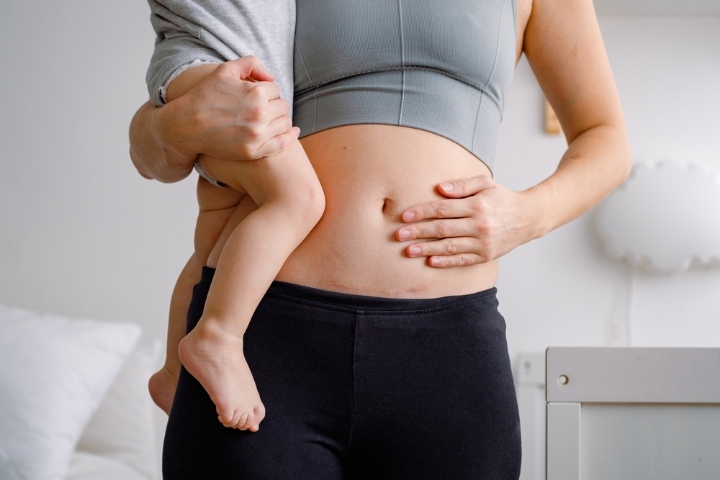Find out the ‘Puerperal Infection Causes And Symptoms’ When germs infect the uterus and surrounding tissues after a woman delivers birth, it is known as a puerperal infection. A postpartum infection is another name for it.
According to the Centers for Disease Control and Prevention (CDC), 17.3 women died from pregnancy-related problems for every 10,000 live births in the United States in 2018.
The highest death rates were associated with heart and blood circulation issues for the same year, according to the CDC. Postpartum infections, which accounted for 13.9% of all pregnancy-related deaths, came in second.
Death rates were also higher in groups that might find it more difficult to receive healthcare, like rural residents and non-Hispanic Black people. Women who had diabetes, heart disease, or high blood pressure also died at higher rates.
Continue reading to discover more about the Puerperal Infection Causes And Symptoms.
What are the types of puerperal infections?
The three different locations where postpartum infections may arise are listed below:
- Endometritis: uterine lining
- Myometritis: uterine muscle
- Parametritis (also called pelvic cellulitis): supporting tissue around the uterus
Endometritis is the most common postpartum infection, as the uterine lining can sustain damage and rips during labor and delivery. The injury creates a pathway for infection to spread.
At the areas of the incision or tear, such as in an episiotomy or cesarean delivery, infection in the uterus muscle or the tissues supporting the uterus may develop (C-section).
What are the symptoms of a puerperal infection?
General signs of a postpartum infection are like a typical infection, such as:
- fever
- chills
- body aches
- loss of appetite
- overall discomfort
More severe symptoms specific to a postpartum infection include:
- pain below the waist or in the pelvic bone area caused by an inflamed uterus
- pale, clammy skin related to a large amount of blood loss
- foul-smelling vaginal drainage revealing an infection
- increased heart rate from blood loss
The onset of symptoms could take many days. Infections can occasionally go undetected until after you leave the hospital. Even after being let go, it’s crucial to keep an eye out for infections.
Puerperal Infection Causes And Symptoms: How are puerperal infections caused?
A healthy uterus is regarded as sterile. Streptococcus or Staphylococcus, as well as other skin-dwelling bacteria, can still cause infections by entering injured skin or tissue. The lower abdomen’s warm, humid environment is ideal for these bacteria to flourish.
Following the mother’s water breaking, postpartum infections may begin in the uterus. Additionally, if the amniotic sac and its fluid contract an infection, the uterus may also do so. The membrane enclosing the fetus and its fluids is known as the amniotic sac.
What are the risk factors?
Depending on how you had your kid, you have a different chance of getting an infection postpartum. Your likelihood of getting sick is:
- 5-15% of scheduled cesarean deliveries are performed before labor begins
- 1-3% of standard vaginal deliveries
- 15-20% of non-scheduled cesarean deliveries are performed after labor begins
Females without a prior pregnancy and women who are extremely young or old may provide an additional risk.
Additionally, pre-existing illnesses like obesity, diabetes, high blood pressure, anemia, and immune system issues might increase the risk of infection.
A female may be more susceptible to getting sick due to additional reasons. These may consist of:
- multiple vaginal exams during labor
- monitoring the fetus inside the uterus
- delay between amniotic sac rupture and delivery or prolonged labor
- manual removal of the placenta
- having remains of the placenta in the uterus after delivery
- excessive bleeding after delivery
- baby’s stool found in amniotic fluid
- use of a catheter to soften the opening of the uterus for birth
Other infectious conditions that may contribute to postpartum infections, namely:
- overgrowth of “bad” bacteria in the vagina
- group B Streptococcus (GBS) bacteria naturally living in the vaginal tract
- sexually transmitted infections
How is a puerperal infection diagnosed?
Postpartum infections are generally detected via a physical examination by your doctor. Your risk factors will be discussed, and the doctor will also look for pain, bleeding, and discharge with an unpleasant odour from the vagina.
To determine whether your body is fighting an illness, the doctor may, if necessary, check your white blood cell count. In order to reduce the likelihood that an infection will enter your bloodstream, your doctor will then act rapidly to make a diagnosis.
Can puerperal infections cause complications?
Rare complications do occur. However, they might appear if the illness isn’t identified and treated right away. Complications that could arise include: Reliable Source
- abscesses, or pockets of pus
- peritonitis, or an inflammation of the abdominal lining
- pelvic thrombophlebitis, or blood clots in the pelvic veins
- pulmonary embolism, a blood clot that blocks an artery in the lungs.
- septic shock, bacteria get into the bloodstream and cause dangerously low blood pressure
How are puerperal infections treated?
If you’re still in the hospital, broad-spectrum antibiotics from Trusted Source are typically administered intravenously (IV) to treat postpartum infections. When the type of bacteria is unknown, broad-spectrum antibiotics are employed since they are effective against a variety of germs.
The doctor may decide to readmit you to the hospital for treatment if you begin to experience infection symptoms after leaving the hospital. Once IV antibiotics have brought your disease under control, the doctor will probably switch to an oral antibiotic before releasing you.
Oral antibiotics may include:
- Augmentin (amoxicillin and clavulanate)
- Vibramycin (doxycycline) plus Flagyl (metronidazole)
- Levaquin (levofloxacin) plus Flagyl (metronidazole)
What is the outlook for puerperal infections?
After giving birth, the postpartum infection can lead to poor health and a sluggish recovery, making it the second most common cause of maternal death in the United States. A blood infection has around 20% probability of killing the patient, while septic shock has a roughly 40% fatality rateTrusted Source.
Your risk drops to 2% if you seek treatment right away after identifying infection symptomsTrusted Source.
Can puerperal infections be prevented?
The method of delivery is the main risk factor for postpartum infections.
When having a cesarean delivery, the American College of Obstetricians and Gynecologists advises taking the following actions to reduce your risk of developing a postpartum infection:
- removing pubic hair with clippers rather than a razor
- taking a shower with chlorhexidine soap at least the night before surgery
- keeping blood sugar under 200 mg/dLTrusted Source throughout pregnancy
Your doctor may use the following prevention practices before surgery:
- preparing the incision area with an alcohol-based preparation
- administration of a one-dose antibiotic 1 hour before the incision
- administration of an entire course of antibiotics for GBS or bacterial vaginosis
You might wish to discuss infection prevention measures with your doctor if you know you will give birth through cesarean section.
Some FAQs On Puerperal Infection Causes And Symptoms
What is puerperal infection?
A puerperal infection, also called a postpartum infection, affects the uterus and the tissues around it. This typically occurs following the trauma of a vaginal or cesarean delivery.
What does a puerperal infection feel like?
A puerperal infection can cause symptoms such as chills, pains, and loss of appetite, as well as the flu-like symptoms. Additionally, the area around your belly may be uncomfortable or painful.
Who is at risk for puerperal infection?
Cesarean delivery poses the biggest risk for puerperal infections. Women who have diabetes, high blood pressure, obesity, anemia, or immune system issues are also more likely to contract infections.
By being aware of your risks, being aware of infection symptoms, and carefully adhering to your doctor’s advice, you can lower your risk of postpartum infection.
Despite your best efforts and the care of your doctor, some postpartum infections are unavoidable.
Knowing your risk factors and addressing them with your doctor during prenatal visits will help you make better decisions and feel more at ease listening to medical advice.
Understanding and keeping an eye out for infection symptoms like fever, chills, pains, and loss of appetite combined with abdominal tenderness when you leave the hospital holding your newborn in your arms. If you have these symptoms, consult your doctor right away.




